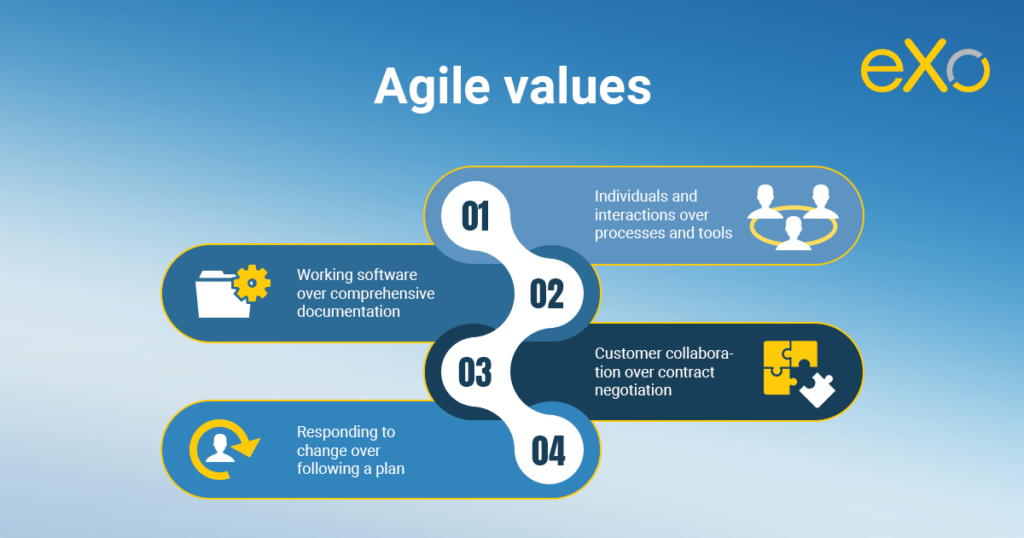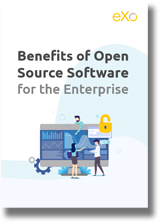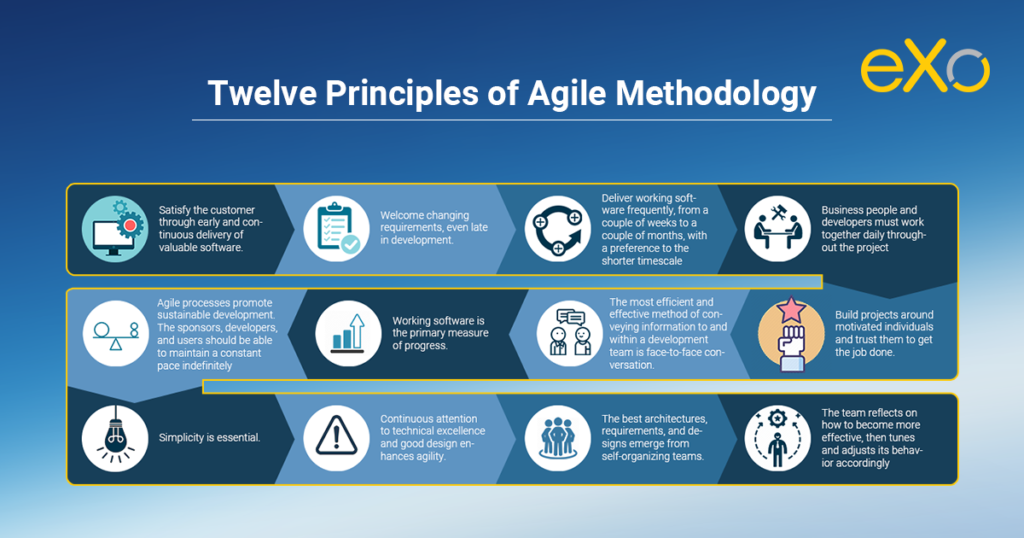- Fares Laroui
- February 19, 2020
Everything you need to know about Agile methodologies
Whether you are a software developer or a tech enthusiast, you are probably familiar with Agile methodologies like Scrum, Kanban, FDD and others. The Agile approach is a well-known and established methodology used by business in industries like software and product development, manufacturing and construction.

Content
discover all the features and benefits
1. A brief history
The early years of software development were characterized by a growing number of software companies that developed and introduced products through unplanned and lengthy processes. Using these old processes and approaches to deliver products to end users can take months or even years.
The frustration with old project management techniques pushed software providers to find effective and fast ways to introduce new products and features into the market. To achieve this goal, 17 developers – aka the Agile Alliance – met at The Lodge at the Snowbird Ski Resort in Utah on February 11–13, 2001. The outcome of the meetings was the development of the Agile Manifesto. The manifesto consists of four main values and 12 principles that put collaboration, human interaction, efficiency, quality and client needs at the forefront of the methodology. Additionally, Agile was designed to significantly reduce the time spent developing new software versions and releases by adopting short periods of work also known as sprints.


FREE WHITE PAPER
for the Enterprise
2. Benefits of the Agile methodology
- enhance collaboration between different teams and individuals involved in a project (product management, design, development, QA, stakeholders, etc.)
- increase efficiency by delivering solutions and products faster without undermining quality
- control costs as sprints have a predefined duration
- Prioritize the most important features and allocate resources accordingly, thus delivering greater business value to clients
- promote visibility and transparency within and between teams and stakeholders
- gather feedback quickly from end users
- adapt to change in needs and user stories.

3. Different Agile methodologies
Scrum
- The Scrum team: According to the state of the scrum report, the average scrum team comprises five to nine people. The team usually consists of a product owner (who represents the client and conveys the vision of the project), a scrum master (responsible for overseeing the whole project and making sure the development team has the optimum conditions to deliver), the development team, and key members from product development companies who bring their expertise to drive the project’s success.
- Events: Five major events are held during a sprint: sprint planning (a kick-start meeting in which the different parties discuss the scope of the project and how the work will be achieved), a daily stand-up meeting (a short meeting in which team members discuss their progress and planned tasks), a sprint review (a demo in which team members present their work), a sprint retrospective (where employees discuss what went well during the sprint and what issues need to be addressed) and the actual sprint. These events aim to improve team communication and collaboration and ensure everyone is on the same page regarding the project.
- Artefacts: Scrum artefacts give both scrum teams and stakeholders key information to understand the project under development as well as planned and completed activities. The product backlog, sprint backlog and product increment represent the three main scrum artefacts. The product backlog is a document containing a detailed to-do list of the existing features, requirements and work items needed to achieve the project’s objectives. The product owner is responsible for the product backlog. The sprint backlog, on the other hand, is a list of the items derived from the product backlog and should be completed within a specific sprint. Finally, the product increment is a collection of backlog items that have been completed.
- Rules: There is no one-size-fits-all strategy when it comes to scrum rules. Rules are determined by the scrum master, who assesses the needs of the project and the available resources so as to determine the rules to follow during a sprint. Some examples of rules are related to the duration of sprints, stand-up meetings, reviews and retrospectives.
Lean software development (LSD)
Kanban
- visualize what you’ll do today (workflow automation) – organize and segmentalize tasks within Kanban boards which specify the progress of the project from backlog and then planned, to in progress, developed, tested and completed;
- limit the amount of work in progress (WIP) – limit and balance the workflow to help teams commit to specific tasks and avoid work overload;
- enhance flow – prioritize important work when teams complete the tasks in hand.
Feature-driven development (FDD)
| Criterion | Old project management approach (e.g. Vee model, spiral model, waterfall model) | Agile approach (e.g. Scrum, LSD, Kanban, FDD) |
| Approach | Linear | Iterative |
| Focus | Process | People |
| Development model | Life-cycle model | Evolutionary delivery model |
| Project scope | Fixed | Variable |
| Planning scale | Long term | Short term |
| Requirements | Defined at the beginning of the project | Adapts to evolving needs |
| Delivery time | Long | Short |
| Team size | Departments | Cross-functional teams |
| Interaction with clients | At the beginning of the project and at specific milestones | Frequent |
| Testing | At the end of the project | Continual testing |
| Project risk | High | Low |
| Documentation | Detailed and through | Only when needed |
Get in Touch with our Experts
Get in Touch with our Experts
Learn How we Can Help Your Teams Collaborate and Get Things done
Related posts
- All
- eXo
- Digital workplace
- Employee engagement
- Open source
- Future of work
- Internal communication
- Collaboration
- News
- intranet
- workplace
- Knowledge management
- Employee experience
- Employee productivity
- onboarding
- Employee recognition
- Change management
- Cartoon
- Digital transformation
- Infographic
- Remote work
- Industry trends
- Product News
- Thought leadership
- Tips & Tricks
- Tutorial
- Uncategorized
Leave a Reply
( Your e-mail address will not be published)


